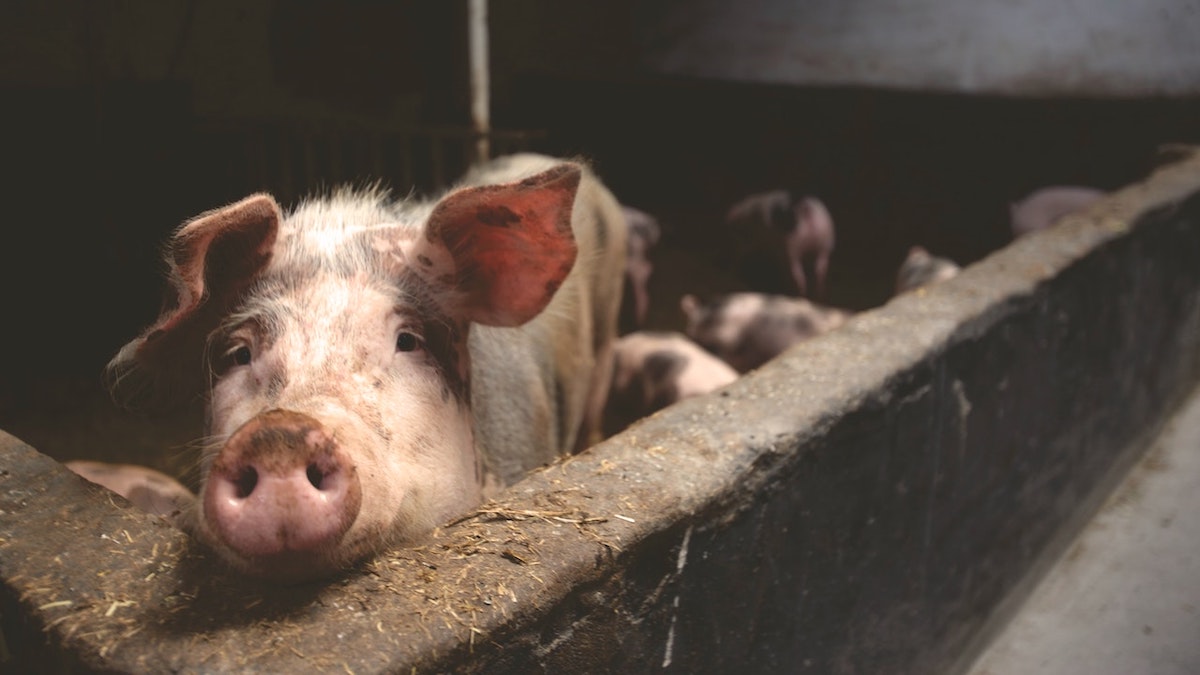Military conflicts take a lot of forms. If we look at the United States’ military history, we see incidents like Pearl Harbor, the sinking of the Lusitania, or the insistence on ownership of other humans as the impetus for taking up arms. But not all wars are so cut and dry, and sometimes shots are never fired despite sky-high military tensions, much like the famous Cold War. But among wars with “War” in their name, there is perhaps no sillier conflict in US history than the Pig War.
Seriously? What Was the Pig War?
Most people have never heard of the Pig War for a few reasons. First, sorry to spoil the tension, but nobody died. Second, it happened in 1859 and a much more consequential/famous war was about to begin. Third, it is impossibly stupid, which is exactly why you’re hearing about it right now.
You see, the Pig War featured some 2,500 troops, more than a dozen cannons, and a handful of warships. Tensions between the United States and Canada (and thus Britain) were arguably at their highest since the war of 1812.
And it all started because of a hungry pig.
In the mid 1800s, the San Juan islands (between Seattle and Vancouver Island, more or less) were disputed territory. The US wanted them, Canada wanted them, and both sides were a little cranky about it. The official declaration (the Oregon Treaty, signed in 1846) referred to the “middle” of the channel between the US and Vancouver Island, but there were two straits that could realistically be deemed the “middle.” San Juan Island was in between them. As a result, both sides believed that the islands were rightly theirs, leaving the people on the island to just sort of coexist.
Thirteen years later, an American man named Lyman Cutlar was living on the island and having some problems with a pig eating the potatoes he’d planted. This was a recurring problem, so Cutlar shot the pig – as one might in 1859. The pig, as it turned out, belonged to an Irishman named Charles Griffin, who was an employee of Canada’s Hudson Bay Company, making him effectively a Canadian for this story. Acknowledging that this, perhaps, was an overreaction, Cutlar said something along the lines of, “My bad. Here’s $10 in the year 1859, which is kind of a lot of money.”
Griffin was downright offended by the $10 offer because apparently this was quite a pig. He replied with, “Nah. Make it $100 or get the heck out of here.”
Now, $100 in 1859 was a ton of money, even if this was a really good pig (to be clear, history does not state whether the pig was exceptional). In any case, Cutlar said no, prompting Griffin and other Canadians to call for his arrest. Except, here’s the thing: If nobody actually owns this island, nobody has the authority to arrest someone of the other nationality. And what happens when an unofficial authority tries to arrest someone? Tensions flare.
The Pig War Gets Real as the Americans and British Send in Troops
The US sent General George Pickett and some men to San Juan Island, hoping they could prevent the British from doing anything rash as the tension continued to rise. The British sent three warships as a response. As the proverbial pissing match continued, the highest tally of troops – each of whom were instructed to only fire when fired upon – reached 461 American soldiers with 14 cannons opposing five British warships with 70 (seventy!) guns and 2,140 men.
That’s a lot of people.
To his credit, British captain Geoffrey Hornby had refused to do anything until an admiral arrived. This prompted a lot of soldiers from both sides taunting the opponent, daring them to shoot first. Neither did. Upon arrival, Admiral Robert Baynes of the Royal Navy looked around and said, “You’re all idiots. We’re not going to war over a goddang pig.” Shortly after the admiral made such a declaration, word of this conflict made its way back to DC and London, where the news was met with appropriate “what the hell are you talking about” vibes from each national government. Leaders were displeased and decided to sweep it all under the rug for safekeeping.
The End of the Pig War
The conflict’s resolution featured a semi-formal agreement suggesting that people would just not be jerks about it for a little while, and the US military quickly turned their attention to the budding Civil War. In the early 1870s, the dispute was settled via an international arbitration wherein German Emperor Wilhelm I made the decision that the US deserved the island in question, and that effectively closed the book on the Pig War, without any blood having been shed. Except the pig, obviously.
But there’s an epilogue!
Remember Captain George Pickett from earlier? He seemed like a good guy, right? He didn’t want the US to lose a strategically important territory due to an angry Irishman being unable to keep track of his pigs. A real symbol of early Americanism and justice!
Well… Pickett had to bail on the San Juan situation shortly after Admiral Baynes arrived because Pickett needed to hurry back and fight in the Civil War – for the South. He famously led Pickett’s Charge, in the battle of Gettysburg, often cited as a turning point in the Civil War because of the massive losses suffered by Pickett and the Confederate Army. Oops.
